
Browse an alphabetical list of artifacts from the Holocaust and World War II. Each object tells a story about the history and demonstrates human experiences during the time period.
<< Previous | Displaying results 11-20 of 21 for "Artifact" | Next >>
This Singer sewing machine was used by shoemakers in the Lodz ghetto, Poland. As early as May 1940, the Germans began to establish factories in the ghetto and to utilize Jewish residents for forced labor. By August 1942, there were almost 100 factories within the ghetto. The major factories produced textiles, especially uniforms, for the German army.
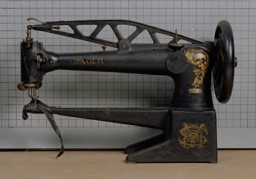
Sketch from the scrapbook of Donald Coster presented to him during his inspection of the internment camp in Djelfa. The page is entitled, "All roads don't lead to Rome." Djelfa, Algeria, ca. 1941.

Sketch from the scrapbook of Donald Coster presented to him during his inspection of the internment camp in Djelfa. The page is entitled, "Gulliver's travels to Djelfa." Djelfa, Algeria, ca. 1942.
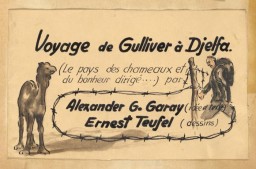
This small patterned hooked rug was used as a shoe mat in the wagon of Rita Prigmore and her family when she was a child in Wurzberg, Germany, after World War II. Rita and her family were members of the Sinti group of Roma (Gypsies). She and her twin sister Rolanda were born in 1943. Rolanda died as a result of medical experiments on twins in the clinic where they were born. Rita was returned to her family in 1944. She and her mother survived the war and moved to the United States, before returning to…
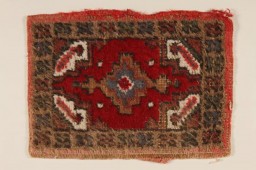
Carl Atkin was United Nations Relief and Rehabilitation Administration (UNRRA) director at the Deggendorf displaced persons camp. He received a songbook created by the survivors in his care. This page shows one of the songs compiled in the book.
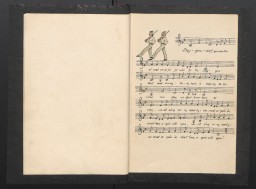
A souvenir stamp book that belonged to a Jewish refugee. The book contains multicolored stamps inscribed with dates and place names. May 1941, Kobe, Japan. [From the USHMM special exhibition Flight and Rescue.]

Photo album containing photographs taken by a passenger aboard the St. Louis, with a depiction of the ship on the cover. In 1939, this German ocean liner carried Jewish refugees seeking temporary refuge in Cuba. It was forced to return to Europe after Cuba refused to allow the refugees entry into the country.

A special issue of Serbian stamps bearing antisemitic and anti-Masonic themes dating from the German occupation. The series was issued for an exhibition on Jews and Freemasons in Belgrade in 1942.
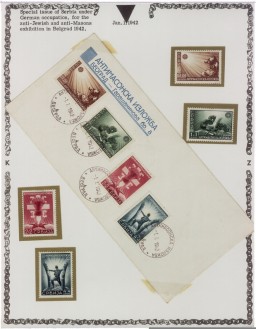
SS Major General Juergen Stroop, commander of German forces that suppressed the Warsaw ghetto uprising, compiled an album of photographs and other materials. This album, later known as "The Stroop Report," was introduced as evidence at the International Military Tribunal at Nuremberg. Here, its cover is marked with an IMT evidence stamp.
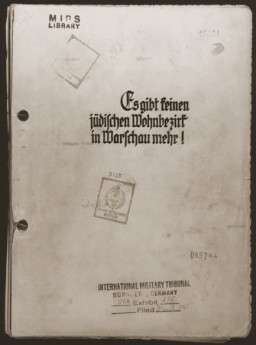
A few Polish Jewish refugees left Japan to join a small Jewish community in Harbin, Manchuria, in Japanese-occupied China. One of them carried this suitcase, covered with stickers from various shipping firms and hotels, on the journey to Harbin. China, 1940-1941. [From the USHMM special exhibition Flight and Rescue.]
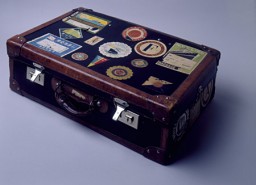
We would like to thank Crown Family Philanthropies, Abe and Ida Cooper Foundation, the Claims Conference, EVZ, and BMF for supporting the ongoing work to create content and resources for the Holocaust Encyclopedia. View the list of donor acknowledgement.